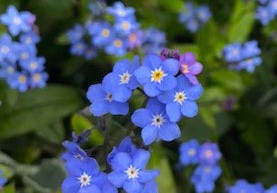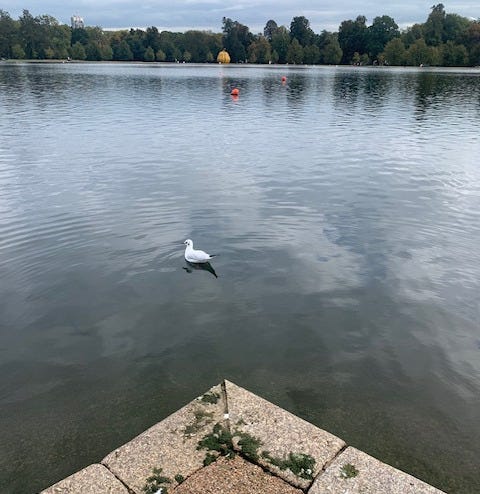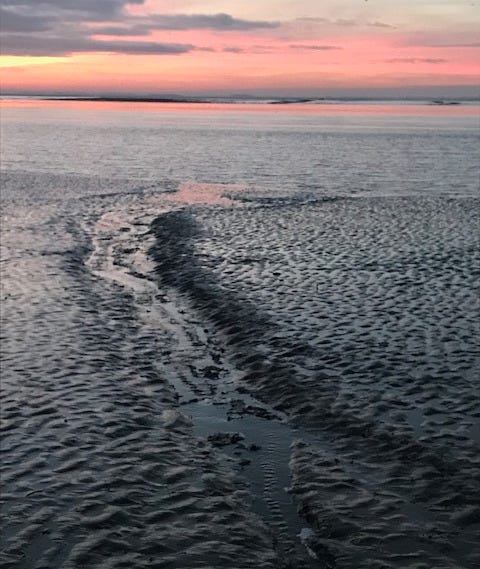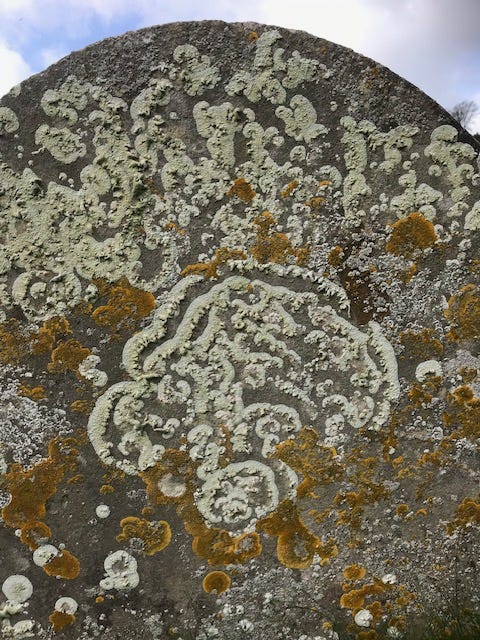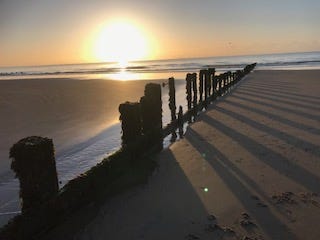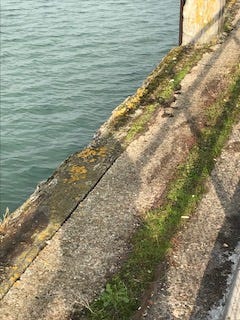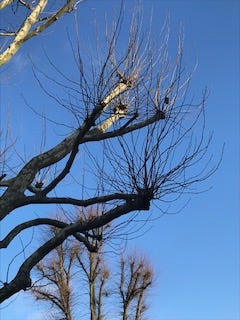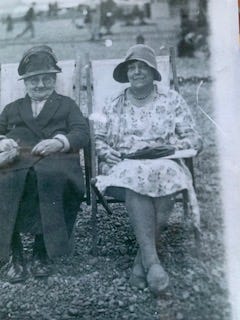9 ways of observing
I can’t find a better way of a) kick starting some writing and reflection and b) of really being in a place than Starhawk’s 9 Ways of observing.
So on a cold March morning I sat by the lake in a local park and did a quick run through of the 9 Ways, in no particular order. (It was too chilly to take very long so these observations might not be that in depth.)
1. I wonder
‘Wonder at everything, even the most everyday things’ Linnaeus’s motto.
I wonder how old that tree is? I wonder what startled the flock of pigeons? I wonder how warm it is in the sun? How long I can sit here for? How the the moorhen can stay so calm with all those Canada Geese honking about?
2. Observing from stillness
What I noticed was movement, conversely. Windruffled feathers, the circling of pigeons, occasional aggressive lunges of the geese, sparkles on the lake surface and clouds gliding Westwards like a moving backdrop. Even the seemingly still winter trees wavered gently.
3. Observing flow
This was a really enjoyable one to do. Observing flows into and out of the area by birds, dogs, people and their various objects with wheels. My attention flowed where it wanted to. I observed clouds of conversations as they flowed from left to right and right to left. Pockets of wind agitating the lake’s surface. The flow of bird sounds then quiet. Sunshine, bold then shy behind big clouds. The flow of excitement as families fed the birds. These flows seemed to appear from nowhere, create a flurry then disappear.
4. Observing patterns, textures and functions
I noticed most people were walking in a linear pattern along the designated paths, going for a stroll but still having a purpose - to see and enjoy the park and the lake. Trees were branching as they do, and pigeons did alot of head bobbing, repetitiously pecking at grain thrown down by humans. Trying to get as much food down their necks before the geese muscled in. There was a dispersing and gathering pattern of birds in flight that was set off by being startled. Mini waves appeared on the lake as a result of the biting westerly wind.
The fence structure was spacious enough to allow birds through but not the larger birds out. (Apparently they ruin the vegetation). It also protected the birds from too much human presence in their habitat.
5. Observing energy
The most obvious energy I sensed was warmth and light from the sun, and in when in shade, a kind of absence, a non-energy. The gently movig water reflected the light energy from its surface. I noticed the cold wind energy in the air and the subtle, solid earth energy from the ground. The slow energy of winter tree growth compared to the quick energy of people walking or cycling or running with their dogs. There was a mainly relaxed energy of people at play, dogs freely exploring and children joyfully curious.
6. Observing limits
(Always good to do in my case!)
I identified the edge of the lake, the fence around it too. No swimming and no going on the boats with paying first! There would also be a limit to the depth of the water and what could survive in it, and maybe its cleanliness. There were fences around trees, maybe also to protect the bird life in its branches. There was a limit to the amount of bird food available for the pigeons which they all noticed! The patches of grass were cut short as a limit to its growth. Tarmac capped the earth on the paths and ketp it sterile. The limits were provided by space available and also to preserve the functions of the area.
7. Observing communities
Birds hanging out together today were pigeons, moorhens and Canada Geese - I wouldn’t say they were an intentional community but they tolerated being side by side. The humans joined them to interact and feed and became honorary members.
The island in the middle of the lake was dense with trees and undergrowth and some ivy (it was too far away to see properly). This community must be fairly stable as it provides nesting sites for many birds.
The plants that particularly like the water’s edge create another community: reeds, Willow and Alder.
Maybe people who like parks could loosely be described as a community as today they are sharing the same space.
8. Observing edges
Where do things end and turn into something else? The edge between land and sky is not always easy to spot. The trees help us recognise the edges by belonging in both.
The shallows of the lake where birds can enter and exit easily. The surface of the lake too where is meets the air and light and is changed by it. It may be warmer than the depths and support more life.
Contrasting with edges is the centre of things. The unseen centre of the lake is more mysterious, we can only imagine what is in there.
The edge of the path and the fence by the lake. A good place to stand and peer at each other, both humans and birds generally stay on their own side of the fence.
9. Observing past and future
This was a Victorian park and I imagine used to be quite formal in its design and in people’s behaviour. There may have been fewer dogs and a more formal dress code. Before that it was farmland.
I imagine later modernisation meant wooden boats replaced by plastic pedaloes and there is a newish wooden bridge round the corner (in need of repair). There is probably more emphasis on diversity and habitat management now than before and planting to reflect this.
In the future I would hope there’ll be more tree planting, caring for the lake, bird conservation. I expect there’ll necessary repairs to boat house, and park benches maybe more emphasis on Health and Safety. Hopefully we’ll never have to pay or book to go in!
I felt I ‘d skimmed over this part as I was getting very cold! I hope you like the 9 ways of observing and will have a go yourselves one day.

